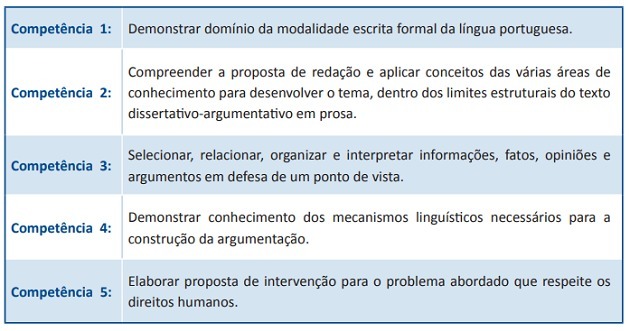The Enem score is obtained through the Item Response Theory (TRI), which is a method based on statistical analyzes that allow you to identify whether a participant got the questions right because they know or if "kicked".
This means that it is not enough to correct your test with the template and add up the number of correct answers.
How are objective questions evaluated?
Each question has a weight. Considering this weight, the system identifies the consistency of the responses, as it is expected that the participants who have already mastered a certain skill and competence will be able to hit different levels of difficulty.
One consequence of using IRT is that participants who get the same number of questions right can have very different final grades. For example, if the participant got many difficult questions right and the vast majority of questions wrong considered easy, the system will identify an inconsistency in the answers, reducing the score of this participant.
However, when identifying the inconsistency of a hit, the question value will not be disregarded, only a lower value will be assigned. Therefore, it is important to get as many easy and medium questions right as possible, as shown in the image below:

How is the newsroom evaluated?
Unlike objective tests, the essay grade presents absolute values, that is, it can range from 0 to 1000 points.
In the writing, 5 competences indicated in the table below are evaluated:

Each of these skills is assigned a value ranging from 0 to 200 and the sum of these values can reach a maximum of 1000 points. Each essay is corrected by two evaluators separately and the final grade will be obtained by making the arithmetic average of these two grades.
When there is a difference greater than 100 points in the final grades given by the evaluators or more than 80 points in each of the competences, correction will be made by a third evaluator. In this case, the final grade will be given by the arithmetic average of the two closest grades.
However, when there is still a discrepancy between the grades, the correction of the wording will be made by a panel formed by 3 other reviewers.
Enem result
Inep (National Institute of Educational Studies and Research Anísio Teixeira), which is the body responsible for Enem, released the official feedback of objective tests on November 13, 2019. Through the feedback, the candidate can have an idea of how his performance was.
However, participants will have access to the grades of objective tests in each area of knowledge and writing only in January 2020, on a date that will still be released by Inep.
Candidates who have not finished high school (trainers) will only have access to this information in March 2020, on a date not yet informed by Inep.
What is a good grade on Enem?
The Enem objective tests do not have absolute maximum and minimum values, that is, these values depend on the performance of all participants who took the test.
In this way, Inep publishes every year the lowest and highest grades obtained in each test. Thus, the participant can get a sense of whether their score was good or not.
In the table below, we present the minor and major scores of Enem 2017 and 2018.

To find out about each of these tests, see the texts we have prepared for you:
- Mathematics in Enem
- Human Sciences and its Technologies
- Natural Sciences and its Technologies
- Languages, Codes and their Technologies

